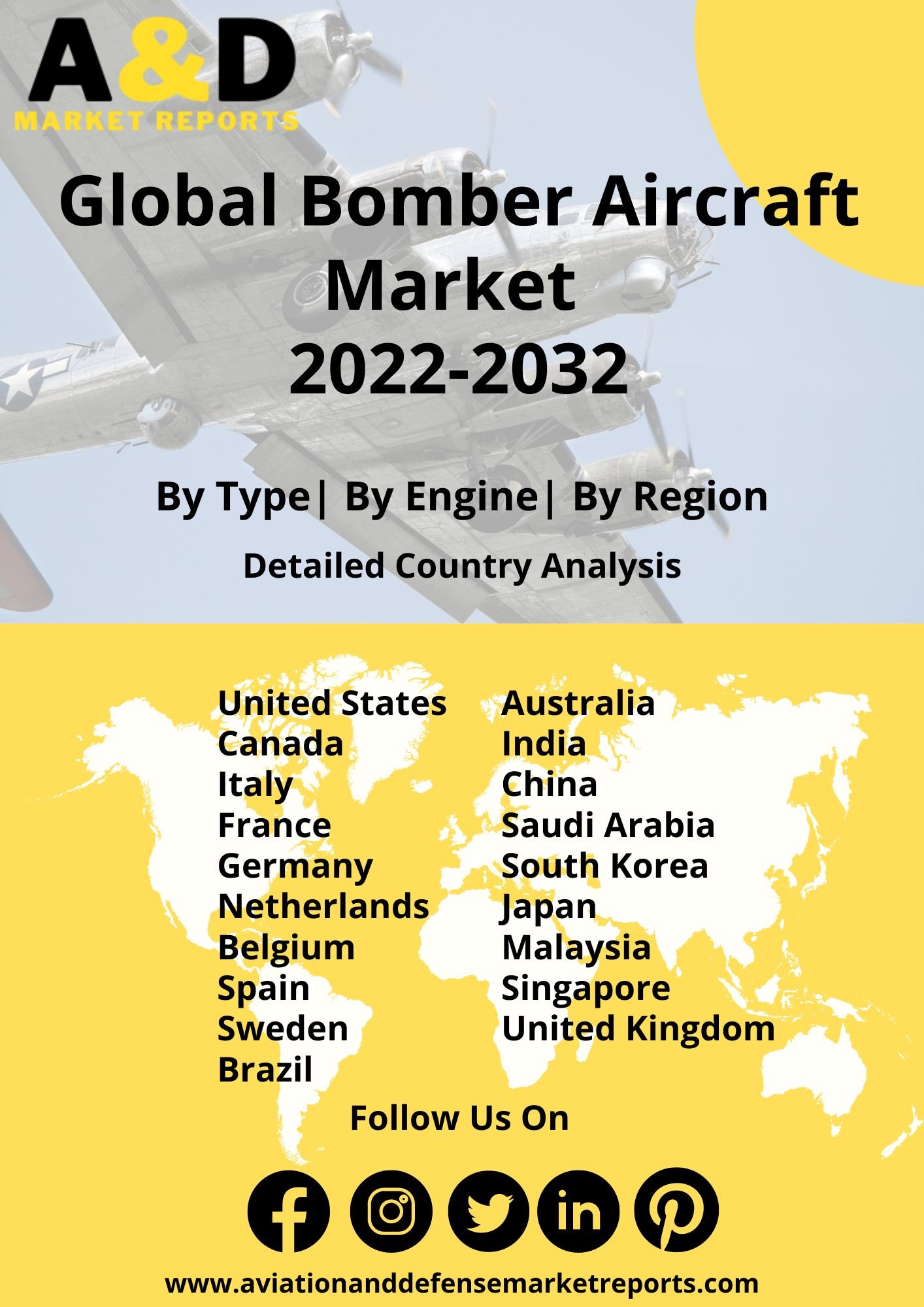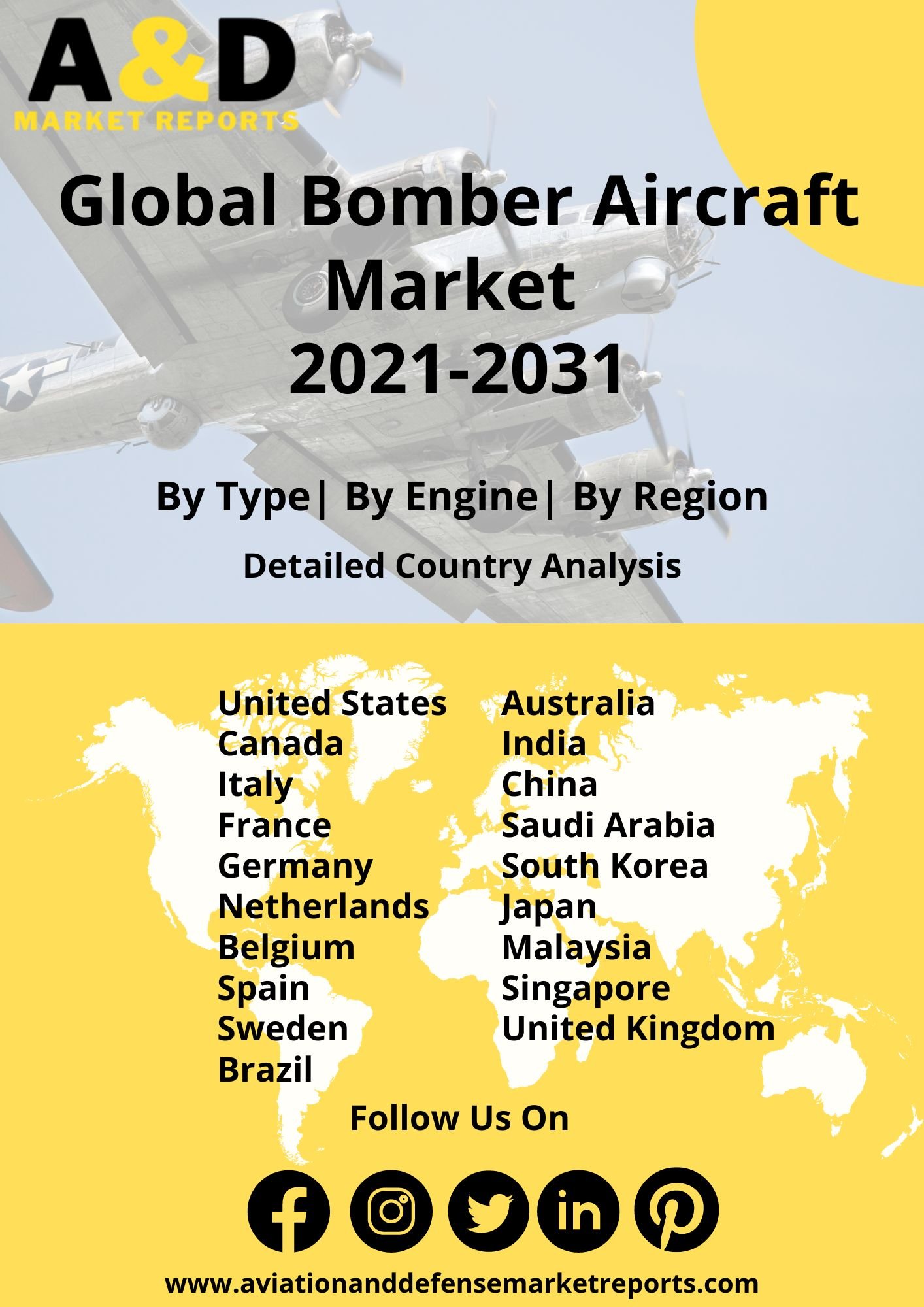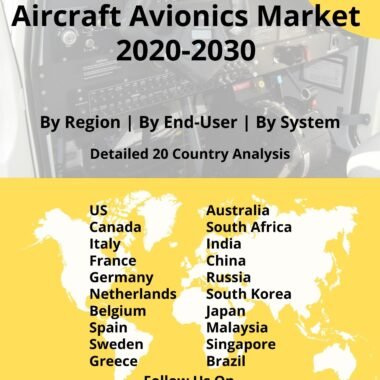Description
Bomber Aircraft Market
Frequently Asked Questions of Bomber Aircraft
The bomber was a novel concept in the early days of World War I. The pilot would have to load his bombs, fly to his target, and drop them out of the plane, guiding them with equal parts chance and prayer. As one might imagine, this type of bombing had little effect on war machines; but, it did give pilots crucial lessons in the art of bombing. Without a question, the finest period of bombing happened during World War II. Bombers were manufactured in large numbers and were constantly updated and researched. The majority of medium and heavy bombers were utilized against fixed targets. The majority of light/dive bombers were utilized to strafe facilities or ground units. The “light bomber” category vanished after the Second World War and was replaced with the comparable but more specialized assault category. Light bombers were no longer termed “bombers” because their weapons did not have vast explosion radiuses, they could engage other aircraft in combat, and they used rockets and cannons just as much as bombs. While medium bombers continued to drop intermediate-sized conventional bomb loads, they were also entrusted with transporting tactical weaponry into enemy territory.
Medium bombers appeared in a variety of sizes, ranging from Dassault’s little Mirage IV to Tupolev’s larger Tu-22M Backfire. Eventually, practically every medium bomber had a variant specifically designed to deliver a WMD. Heavy bombers have essentially remained the same in concept since the Second World War. They are all big, capable of carrying a significant payload of bombs and can be outfitted with strategic weapons like nuclear explosives and cruise missiles. Heavy bombers are the most vulnerable of all bomber categories, as they are slower than medium bombers. To protect themselves on their way to a target, contemporary bombers use stealth, speed, and, most crucially, escort fighters. The most advanced bombers in the world rely significantly on stealth technology. Carbon fiber composites, special paint, and the aircraft’s distinctive design all contributed to the aircraft’s ability to scatter enemy radar.
Major factors driving Bomber Aircraft Market Growth
Bombers are costly to purchase and maintain. They must be operated from deep-water airbases, but they have a longer-range capability. They can, of course, carry electronic warfare equipment to aid in deep penetration missions. A bomber is a superb weapon platform since it can carry big weaponry such as cruise missiles. A strategic bomber is a medium- to long-range bomber aircraft that is meant to deliver huge amounts of air-to-ground ordnance on distant locations to limit the enemy’s ability to wage war. Strategic bombers are designed to travel deep into enemy territory to attack strategic targets such as key infrastructure, logistical facilities, military sites, factories, and cities, as well as to carry out nuclear strike missions. Strategic bombers increase the strike capability and range of any modern air force. The demand for next-generation strategic bombers will be one of the major market trends that will be driving the growth of the market.
Trends influencing the Bomber-Aircraft Market Size
Designing an open systems architecture reduces integration risk and allows competition for future modernization efforts, allowing the aircraft to develop as the threat environment evolves. Advanced composites and additive manufacturing also enable the development of advanced bomber aircraft. There are major market trends that will influence the growth of the market.
Bomber-Aircraft Market Forecast & Dynamics
Increasing defense spending will new procurement activities and upgrades to existing platforms with newer technologies and capabilities. The increase in defense spending will encourage the procurement of new tactical and strategic bombers depending on the needs of the nation. Procurement will also be driven by prevailing geo-political conditions in Europe and the Asia Pacific. The bomber aircraft market forecast includes a comprehensive market analysis and market size. The market analysis includes regional market size, drivers, restraints, and opportunities. The regional analysis also includes country-wise market size.
Bomber Aircraft Market Analysis for Recent Developments
The B-21 Raider, the Pentagon’s new stealth bomber, makes its debut. The B-21 Raider is America’s first new bomber aircraft in more than 30 years. Almost every part of the application has been labeled. The B-21 is part of the Pentagon’s efforts to update all three legs of its nuclear trident, which also includes silo-launched nuclear ballistic missiles and submarine-launched warheads, as it transitions from counterterrorism campaigns to meet China’s rapid military modernization. Advanced coating compounds are utilized to make the bomber difficult to detect. Other advancements are likely to include new methods of controlling electronic emissions, allowing the bomber to spoof opposing radars and disguise itself as another object, as well as the employment of new propulsion technology.
The Ejection Seat of Russia’s ‘PAK-DA Strategic Bomber is being tested. The tests would include climatic and resource tests as well as an examination of mechanical repercussions.’ This entails determining if the structural integrity is preserved and whether the system can survive the severe forces on the seat while being ejected by rocket boosters in mid-flight. The PAK-DA is Russia’s first ‘long-range strategic bomber’ in decades, intended to replace Tupolev Design Bureau’s three stalwarts of the RuAF – the Tu-160 Blackjack,’ Tu-22M, and the Tu-95 ‘Bear’ from the 1950s.
Northrop Grumman Corp.’s B-21 Raider, the United States’ newest stealth bomber, completed its first test flight, a key milestone in the $203 billion program designed to stay well ahead of China’s technological advances. According to the service, the distinctive batwing-shaped B-21 will be delivered to Ellsworth Air Force Base in South Dakota in the mid-2020s. Six test aircraft are currently being manufactured on the same production line that will be used for combat-ready aircraft, a process lauded by lawmakers and the Government Accountability Office for improving manufacturing and reducing the need for costly retrofits. The B-21 is an important part of the Pentagon’s strategy to counter China as the United States’ primary global challenger, and it replaces the similarly shaped but much larger B-2. The new plane is intended to transport both nuclear and conventional precision-guided long-range munitions, as well as to work in tandem with drones.
The average procurement price per plane for the B-21 has remained below the $550 million target in fiscal 2010 dollars. Adjusted for inflation, the equivalent in fiscal 2022 dollars is approximately $692 million. The B-21 is said to have unrivaled range, stealth, and survivability. It is equipped with both conventional and nuclear weapons. According to the Air Force, the B-21 is expected to significantly advance US air power by being capable of striking targets anywhere in the world. The B-21 was designed to accommodate manned or unmanned operations, reflecting the US military’s increasing reliance on unmanned aircraft and the future of the pilot specialty. The Pentagon intends to build 100 B-21s. According to the fact sheet, the average unit cost for each bomber is around $700 million. Following extensive environmental studies, the aircraft will be delivered to Ellsworth Air Force Base near Rapid City, South Dakota, in 2021. It will be the main operating base and formal training unit for the B-21.
Key Companies







